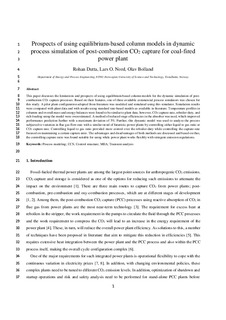Prospects of using equilibrium-based column models in dynamic process simulation of post-combustion CO2 capture for coal-fired power plant
Journal article, Peer reviewed
Permanent lenke
http://hdl.handle.net/11250/2444439Utgivelsesdato
2017Metadata
Vis full innførselSamlinger
Sammendrag
This paper discusses the limitations and prospects of using equilibrium-based column models for the dynamic simulation of post-combustion CO2 capture processes. Based on their features, one of three available commercial process simulators was chosen for this study. A pilot plant configuration adopted from literature was modeled and simulated using this simulator. Simulation results were compared with plant data and with results using standard rate-based models as available in literature. Temperature profiles in columns and overall mass and energy balances were found to be similar to plant data; however, CO2 capture-rate, reboiler-duty, and rich-loading using the model were overestimated. A method of reduced stage efficiencies in the absorber was used, which improved performance prediction further with a maximum deviation of 5%. Further, this dynamic model was used to analyze the process subjected to variation in flue gas flow-rate with a similar trend of futuristic power plants by controlling either liquid to gas ratio or CO2 capture-rate. Controlling liquid to gas ratio provided more control over the reboiler-duty while controlling the capture-rate focused on maintaining a certain capture ratio. The advantages and disadvantages of both methods are discussed and based on that, the controlling capture ratio was found suitable for using while power plant works flexibly with stringent emission regulations.
